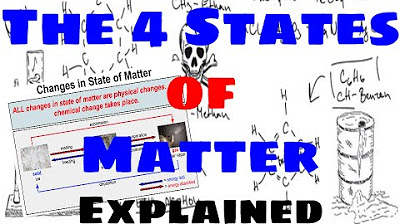A Basic Acceleration Example Problem and Understanding Acceleration Direction
Summary
TLDRIn this educational video, Mr. P and his students explore the concept of acceleration through a physics problem involving a bike. They discuss the importance of direction in acceleration and how it correlates with the direction of velocity. The class translates the problem into physics terms, converting units from kilometers per hour to meters per second, and calculates the acceleration using the change in velocity over time. The lesson emphasizes the difference between speed and velocity, and the students clarify their understanding through examples and questions, ultimately determining the bike's acceleration to be -0.41 meters per second squared.
Takeaways
- 🚴 Mr. P begins a physics class by introducing a problem involving acceleration while riding a bike.
- ⏱ The problem states that Mr. P's bike accelerates from -14.3 km/h to -23.7 km/h over 6.4 seconds.
- 🔢 The class converts the velocities from km/h to m/s to match the time unit for acceleration calculation.
- 📐 The formula for acceleration is a = Δv / Δt, where Δv is the change in velocity and Δt is the change in time.
- 📉 The calculated acceleration is -0.41 m/s², indicating a decrease in speed due to the negative sign.
- 🤔 A discussion ensues about the difference between speed (always positive) and velocity (which can be negative).
- 📚 Mr. P clarifies that a speedometer displays speed, not velocity, hence the absence of negative signs on the bike's display.
- 📉 The direction of acceleration is the same as the direction of the velocity when an object is speeding up and opposite when slowing down.
- 🔄 The class reviews examples to understand that if an object is moving left and speeding up, both velocity and acceleration are negative.
- 📝 The lesson concludes with a reminder that acceleration has both magnitude and direction, even if the problem statement doesn't provide enough information to determine the latter.
Q & A
What is the initial velocity of Mr. P's bike in the problem?
-The initial velocity of Mr. P's bike is -14.3 kilometers per hour.
How is the final velocity of the bike described in the problem?
-The final velocity of the bike is given as -23.7 kilometers per hour after 6.4 seconds of constant acceleration.
What is the formula used to calculate acceleration in the script?
-The formula used to calculate acceleration is acceleration equals the change in velocity over the change in time, which is expressed as acceleration = (velocity final - velocity initial) / time.
Why is it necessary to convert kilometers per hour to meters per second in the problem?
-It is necessary to convert kilometers per hour to meters per second to match the units with the time given in seconds, allowing for a consistent unit system in the calculation.
What are the converted values of the initial and final velocities in meters per second?
-The converted initial velocity is -3.972 meters per second, and the final velocity is -6.583 meters per second.
What is the calculated acceleration of the bike in meters per second squared?
-The calculated acceleration of the bike is -0.41 meters per second squared.
Why are the velocities negative in the problem?
-The velocities are negative because Mr. P is moving to the left, which is considered the negative direction in the context of the problem.
How does the direction of acceleration relate to the direction of velocity when an object is speeding up or slowing down?
-When an object is speeding up, the velocity and acceleration are in the same direction. When an object is slowing down, the velocity and acceleration are in opposite directions.
Why doesn't the acceleration in the problem have a direction specified?
-The acceleration in the problem does not have a direction specified because the problem statement did not provide enough information to determine the direction, focusing only on the magnitude of the acceleration.
What is the significance of the speedometer reading in the context of the problem?
-The speedometer reading provides the magnitude of the velocity, not the velocity itself, which includes direction. This is why the readings are positive numbers despite the actual velocities being negative.
What lesson does Mr. P emphasize regarding the relationship between velocity and acceleration?
-Mr. P emphasizes that it is crucial to understand that the direction of acceleration is related to whether the object is speeding up or slowing down, and that this relationship should be considered when interpreting the results of calculations.
Outlines

このセクションは有料ユーザー限定です。 アクセスするには、アップグレードをお願いします。
今すぐアップグレードMindmap

このセクションは有料ユーザー限定です。 アクセスするには、アップグレードをお願いします。
今すぐアップグレードKeywords

このセクションは有料ユーザー限定です。 アクセスするには、アップグレードをお願いします。
今すぐアップグレードHighlights

このセクションは有料ユーザー限定です。 アクセスするには、アップグレードをお願いします。
今すぐアップグレードTranscripts

このセクションは有料ユーザー限定です。 アクセスするには、アップグレードをお願いします。
今すぐアップグレード関連動画をさらに表示

The Four States of Matter - Explained

Lab Equipment - Explained

3. Gr 11 Life Sciences - Population Ecology - Theory 3 Mark Recapture Method

4. Gr 11 Life Sciences - Population Ecology - Worksheet 1

PENJASKES KELAS X - SOFTBALL

Introduction to Culture [AP Human Geography Review Unit 3 Topic 1]

Menentukan Mr ( massa molekul relatif )
5.0 / 5 (0 votes)
